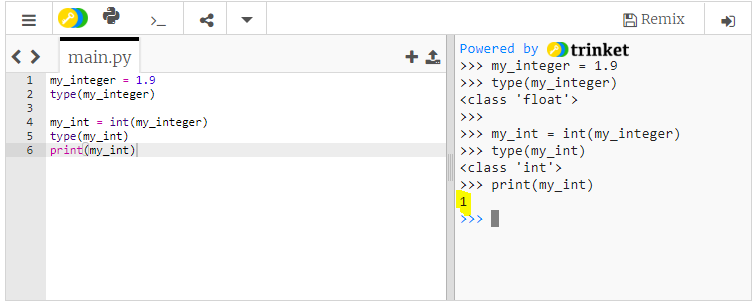This topic is to discuss the following lesson:
Hi Rene,
In given eg,
my_integer = 1.9
type(my_integer)
my_int = int(my_integer)
type(my_int)
i could not understand the output of last two commands , as per me it will be like this:
type(my_integer) = type(1.9)
my_int = int(1.9)
type(my_int) = type (int(1.9))
so as per you it shows that class is integer(what integer) and How and how it get rid of decimal values?
Hello Pradyumna
The code in this particular example is as follows:
my_integer = 1.9
The above code creates a variable called my_integer and assigns it a value of 1.9. This will automatically make this variable a float type because it is not an integer, but a real number.
type(my_integer)
This code causes output that indicates the type of variable that my_integer is. You can see this returns the following text: <class ‘float’> so it is verified that the my_integer variable is of float type.
my_int = int(my_integer)
The above code takes the my_integer variable, which is of type float, and converts it to an integer, and stores it in the my_int variable. The result is that the my_int variable now contains an integer of value 1. Remember that whenever a float type is converted to an integer type, the result is a “floored” value, meaning any decimal digits are simply removed.
If you add the following code, you can print out the value of the my_int variable:
print(my_int)
From the below screenshot you can see that this value is indeed 1.
type(my_int)
Finally, the above code returns the type of variable that my_int is which is an integer.
I hope this has been helpful!
Laz
Hello, everyone.
Just a short question, in this code snippet
Which part of the number here is the real part and which one is the imaginary? I am not quite sure what the j at the end defines.
Thank you.
David
Hello David
In Python, complex numbers are represented in the form a + bj, where a is the real part and b is the imaginary part. The j suffix explicitly denotes the imaginary unit.
I hope this has been helpful!
Laz

